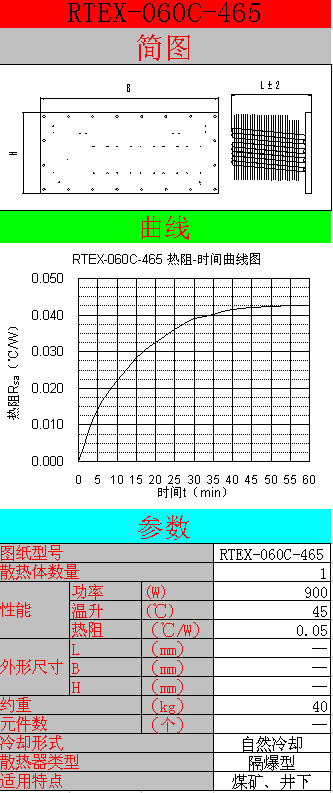Address: No. 18 Daqi Street, Tiexi District, Anshan City, Liaoning Province
Tel: 0412-6562200 0412-6572200
Consultation hotline: 400-0412-158
Office fax: 0412-6572299
Zip code: 114000
Website: www.anming.com/en
Website: www.anming.com
High-power heat pipe radiator: the process standard is difficult to set
During the operation of the LED, only 20%-25% of the electrical energy is converted into light energy, while other parts are converted into heat energy. If the junction temperature of the LED is too high, the PN junction life of the LED will be sharply shortened, which will affect the life of the whole lamp. Therefore, the importance of the heat sink in the design and manufacture of LED lamps is unquestionable, especially in the field of indoor lighting and small power lamps.
At present, high-power radiators (mainly including bulbs, downlights, ceiling lamps) are processed in three ways: die-casting, profiles and cold forging. Die casting refers to a process of casting a mechanical device by using a mold, pouring an aluminum alloy metal heated to a liquid state into a feed port of a die casting machine, and die-casting a die-casting machine to cast an aluminum alloy part of a predetermined shape and size.
"The LED heat sink is made by die-casting, and the ADC12 material is usually used." Hou Chaogang, technical director of Shenzhen Yuda Heat Transfer Co., Ltd., said that because of low processing cost and high productivity, it can be die-casted and can be used under the conditions allowed by the mold. Production of radiators in various shapes.
At present, the thermal conductivity of aluminum alloy is about 96W/M.K. In addition to surface injection or electroplating during the die casting process, and the accompanying auxiliary oxidation residue, the actual thermal conductivity may be worse.

"The defect of this type of heat sink cast by die casting is that the fins of the die-casting parts are very thick, resulting in a small heat-dissipation area, which is not conducive to heat dissipation." A professional manufacturer of die-casting parts told reporters that the die-casting heat sinks with the use time The increase in surface will cause peeling, which will affect the heat dissipation and affect the appearance.
Profiles, all known as aluminum profiles CNC turning. The process is to liquefy the metal, extrude it through a fixed mold, and finally cut into the desired shape. It is a technique of forming into a mold by extrusion. When using the profile process for processing, the material is mostly A6 06 1 material. The thermal conductivity of this material is about 180 W/M. K, and the thinnest fins can be made 1 mm.
The reporter learned that compared with the die-casting heat sink, the advantage of the profile heat sink is that the heat dissipation effect of the product is relatively good, and the surface treatment of the finished product such as anodizing treatment is easier. Moreover, the mold making cycle is greatly shortened. Under the same conditions, the die-casting mold production cycle usually takes 30-45 days, and the profile mold making cycle can be shortened to 10-15 days.
Cold extrusion, also known as cold forging, refers to a plastic processing method in cold conditions. The cold forging integrated radiator is a device produced by placing a pure aluminum billet in a precision cold forging die and plastically deforming by a press.
“Cold forging integrated radiator can be called the third generation of the current radiator market.” Tian Maoqiang, sales manager of Jiazhou Lighting Appliance Co., Ltd. said that the cold forging integrated radiator only needs the end and the arc of the blade to be CNC. Lathe processing saves raw materials and processing time, which can reduce production costs.
The reporter learned that the current mainstream bulb cold forging radiator is made of 1070 pure aluminum, its thermal conductivity is about 226W/MK, the blade thickness can be 0.7mm, the pitch is 1.5mm, and the appearance of the product adopts modern streamline design. In line with the concept of public aesthetics.
"The same size LED lamp cup, the heat dissipation effect of cold forging is more than twice that of die casting, which is more than one third higher than that of the profile." Tian Maoqiang also said that in terms of weight, compared to the die-cast housing, The use of cold forging technology will reduce the heat sink by more than one-third. For large-quality LED lamps, the use of cold forged radiators can greatly save transportation costs.
However, the cold forging integrated radiator still has its defects, and it is impossible to produce a complicated product due to the limitation of the forging process.
ANSHAN ANMING HEAT PIPE SCITECH CO LTD(parent company)
Address: No. 18 Daqi Street, Tiexi District, Anshan City, Liaoning Province
Office Telephone: 0412-6562200 0412-6572200
Office fax: 0412-6572299 zip code: 114000
Website: www.anming.com/en
Website: www.anming.com
International Market: Anming_export@163.com
Domestic Market: Anming_yx@163.com
Technology Development: Anming_tech@163.com
| |
| Mobile website |